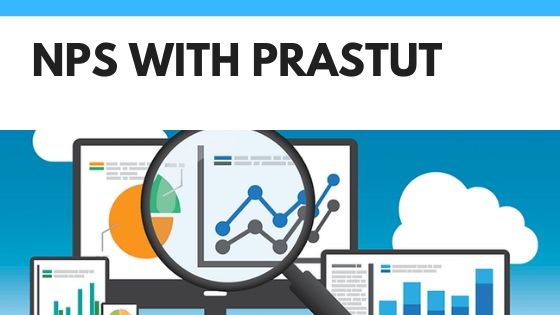NPS also is known as net promoter score is a proven methodology for measuring customer loyalty through first-hand feedback. It is a popular customer experience metric because it is simple, effective, and correlated to revenue growth. Developed in 2002 by Fred Pilichheld. His main aim was to predict customer loyalty and business growth. He used to quote NPS as “How likely are you to recommend XYZ product/service?” This has been adopted by top brands worldwide.
The main focus of NPS is to group the responses. this helps have an overall idea about how you are performing like a brand. The main groups are Promoters, Passives, and Detractors. If your rating ranges from 9-10 the customer is a promoter. If the rating is below 6 they are considered detractors and if the rating is 7-8 they are passives.
If a customer is a promoter or recommends your company they are more likely to stick to you whereas the ones that poorly rate you are more likely to detract you from your business and can be harmful to your brand reputation. It mainly helps you improve your business. This can be done via mail, text, call, or even in person. The survey can be divided into segments:
- Singe question survey where customers answer the question in 2 parts. 1st being the rating 0 to 10.
- This is followed by a free form follow up question to understand the rating of the customer.
A promoter is more likely to repurchase the product or service and fuel viral growth through word of mouth. Passives are usually left out of NPS calculations because they are neutral and are susceptible to competitor offerings. Detractors are usually not satisfied with the product or service and are proactive in outrage the brand image. they have a huge negative influence on customer satisfaction.
In order to calculate NPS, you need to subtract the % of detractors from the % of promoters. NPS score strongly correlates with sales. NPS tells businesses how they’re doing in two very important areas: customer promotion and customer loyalty. Recommendations from friends and family are more trustworthy than all other forms of advertising to 92% of consumers. Once you get a baseline NPS, you can measure it against variables to determine their impact on NPS. In this way, you can learn how to grow your NPS, and your sales too.
WHY NPS?
1. It aligns your team :
Give your team a clear goal and remove all barriers that get in the way of your team reaching that goal. Having a clear focus is important to building both a successful customer success team and a lasting company. When your team is aligned on a common mission, strategy, and quarterly goal, you’re more likely to be successful. By making NPS a key metric for your customer-facing teams, you will all be laser-focused on this objective, and they will aim to have customers walk away with a positive experience in every interaction. Your team will work together more closely, they’ll encourage each other, and they’ll celebrate promoters and do everything they can to reduce detractors. The result? Sales will increase, customers will churn less frequently, and you’ll be on your way to building a long-lasting business with tons of loyal customers.
2. It measures customer loyalty:
Measuring NPS on a daily basis will show you the likelihood of your current customers to refer to other customers. In short, it gives you a tab on your loyalty performance — are customers fans, or even better, advocates for your brand? Once you have an Idea of the NPS you could target your audience the right way.
3. It identifies areas for product improvement:
When you track NPS, you can see the negative side effects of updates, and you can troubleshoot changes with your product in real-time. NPS consists of a numerical ranking, but there’s also a qualitative question that follows, asking the respondent to assess why they answered the first question.
4. It quantifies word-of-mouth traffic:
You can use the metric on a daily basis to gauge your word-of-mouth performance. As you introduce more promoters, your word-of-mouth machine grows. As you introduce detractors, it slows. It’s important to note there are other variables at play here, but you should be concerned with the general trends of your NPS over time.
NPS the Prastut Way
We don’t only do superficial skimming. We go in depths of every response to give you the right data that would help you grow as a brand. Our main aim is to identify your needs and to deliver the best of our abilities and leave no stones unturned. The first step to getting you the desired result is planning the right kind of NPS survey. With the help of the NPS, the company will able to track recommendation rates for the service provided and estimated tools to identify the focus area by which will further help the company to improve the score. Better the NPS Score better the growth.
We at Prastut help you discover the root cause of their answer by asking them why they scored positive or negative. When any feedback is registered by a customer/client, first the team tries to resolve detractor’s issues and recover them, then the goal is to turn them into promoters and then they tell others about the transformation from their experience. This approach is called mobilizing promoters. Find out the reasons, what drives customer loyalty, and why detractors are unhappy, you will be able to drive actions to optimize the customer experience
Any score below 0 indicates that a business has more detractors than promoters. Here’s where industry NPS benchmarks like the ones mentioned above are useful: while an NPS score of -3 may seem bad in isolation, it’s hard to interpret it without comparable scores from key industry players—if the industry average was -10, suddenly the score would not look as bad. This said, even if the bar is set low, a negative NPS is a sign that a business has some serious work to do to improve the situation, reduce the number of unhappy customers, and generate more promoters. To grow your business, you need satisfied customers or ‘promoters’ who talk about you enthusiastically and send referrals your way—and the way you measure your promoters is by checking how many people scored you 9 and 10 in an NPS survey.
Reach out to us here
Check out our services here





